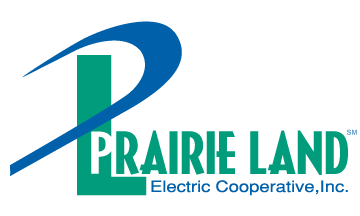This content was featured in the April issue of Kansas Country Living magazine and was part of the 2022 Annual Report.
What is normal? Normal can be defined as any behavior or condition that is usual, expected, typical or conforms to a pre-existing standard. But after the past several years with COVID-19, Winter Storm Uri, supply chain issues, labor shortages and high inflation, what does the usual, expected, typical or pre-existing standard look like? We live in a time of constant change and abnormality, which seems to be the “new” normal.
Like most of our members, Prairie Land has been subject to constant challenges in obtaining goods — in our case the very pieces of equipment we need to serve our members. Lead times on utility trucks have gone from 6-12 months to 2-3 years. Common class wood poles have seen unprecedented demand across the country, making the delivery of a standard wood pole difficult. Wire, hardware, line materials and transformers have doubled in lead times, and all have significantly increased in pricing. In some cases, costs have increased 200% over what we paid just a few years ago.
As our supply chain has tightened, the demand for electricity continues to increase, not only within our region but across the country, putting a strain on our power grid. Our regional transmission organization, the Southwest Power Pool (SPP), coordinates, controls and monitors the electric grid across our region. Their biggest challenge is meeting the needs of our members during extremely high demand for energy, whether it be in the dog days of summer or the dead cold of winter. At the same time, we see power plants being shut down across the country faster than new plants are being built. In most cases, traditional large-scale power suppliers such as coal and nuclear plants are being closed and replaced by alternatives that operate on a much smaller scale.
Electricity, as well as the fuel that generates it, is a commodity that is affected by supply and demand economics. This past summer, extremely hot weather conditions caused a greater demand for electricity. In fact, on July 19, the SPP region experienced a record high demand for energy.
When demand increases, the electric grid requires less efficient power plants to operate along with the more efficient baseload plants that normally serve the load to meet consumer needs. The combination of less efficient power generation and higher fuel prices to power the generation leads to higher prices for electricity. This, in turn, is passed on to the Prairie Land member.
How does Prairie Land mitigate the ramifications of market fluctuations in the cost of energy? In short, Sunflower Electric, our generation and transmission provider, utilizes generation fuel diversity and various hedging products to help protect our members from even higher energy prices. Sunflower’s coal-based unit at Holcomb Station generates energy at a lower cost than natural gas, providing a significant hedge for its members. Sunflower also recently added 20 MW of solar generation through the Johnson Corner Solar Project. Stable-priced solar energy helps moderate electricity prices during the sunniest and hottest parts of the summer when electricity demand is at its highest. Sunflower is pursuing additional solar energy projects to further control the impact of summer energy prices and hedge them in the future.
Further changes are sure to come. Last year, there were record increases in electric vehicle (EV) sales, and experts are predicting that by 2035 many major vehicle manufacturers will only produce electric models. The need for more electricity will have a major impact on the nation’s grid, which means power supply and grid infrastructure must be carefully planned to accommodate the increased need for electricity.
EV charging presents new challenges in maintaining the electric grid. Fully charging an EV battery requires the same amount of electricity needed to power a home during peak energy use times. However, EV charging is a concentrated pull of energy over an extended period, which can add stress to the local power grid by increasing the amount of electricity a utility has to provide. Prairie Land is currently identifying ways to manage this new pattern of electricity use, though those exact strategies will vary based on the market penetration of EVs in each area.
While everyone is experiencing these challenges, Prairie Land is committed to ensuring the lights stay on and continuing to provide quality service to our members. However, we can’t stop Mother Nature from doing what she does, and we can’t change the principle of supply and demand. But, through adversity, we will strive to be your trusted energy resource, providing safe and reliable energy services to deliver the power to improve the lives of our members and communities.
